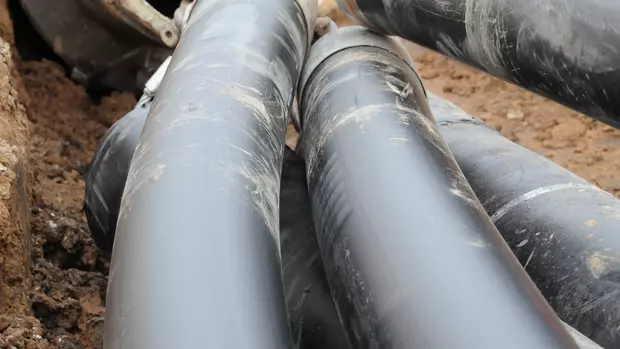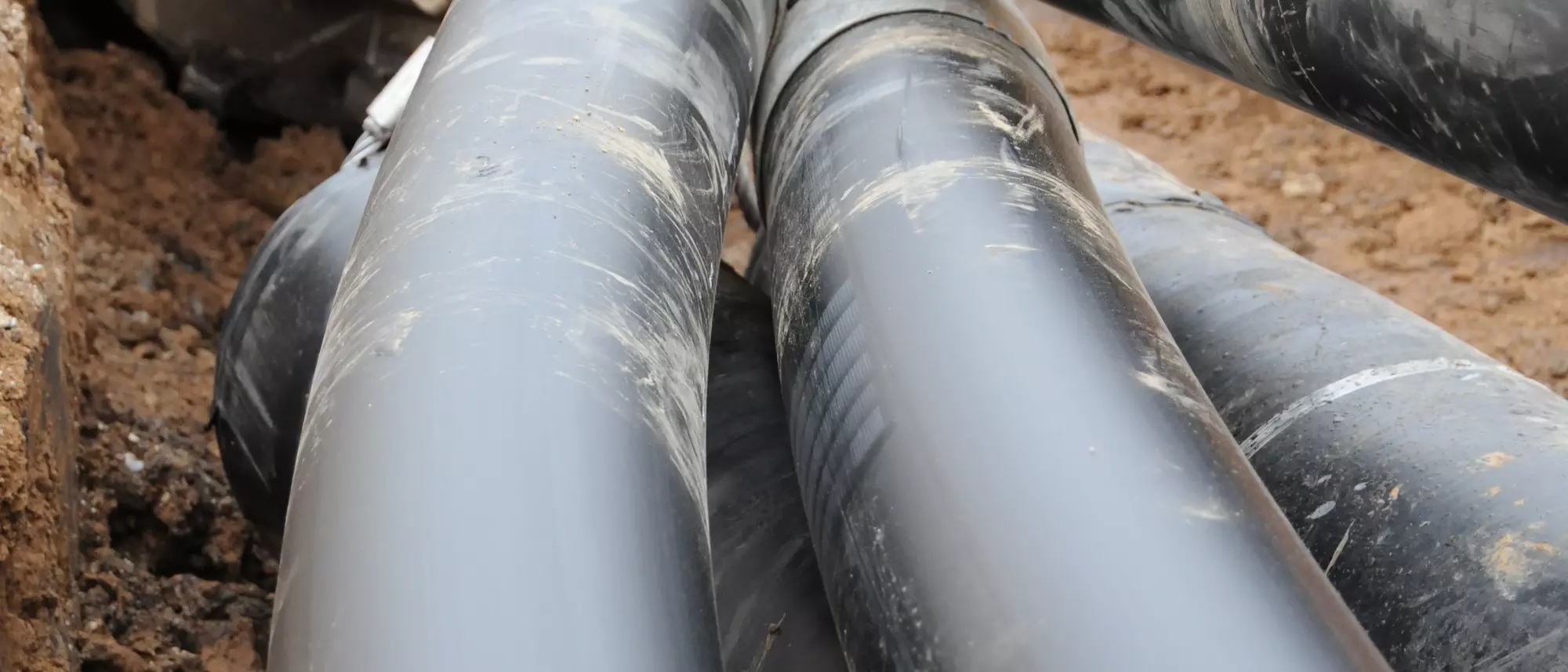
Stadtwerke Gießen is currently laying another, significantly shorter district heating pipeline between Leimenkauter Weg and Wißmarer Weg from the generation plants in Westbad to the numerous customers in Nordstadt. "With this construction project, we are increasing the security of supply and improving the efficiency of the network at the same time," explains Matthias Funk, Head of Heat Supply at SWG. The special thing about this project is that the new route runs under the River Lahn - at the point where the city of Giessen is having a pedestrian and cycle bridge built for the State Garden Show.
Multiple bores under the Lahn
The only sensible method of passing the two district heating pipes, which are more than 30 centimetres thick, under the Lahn - experts call it a culvert - is the flush drilling method. A steerable drill eats its way from one head hole through the ground to a second head hole on the other side of the river and lines the wall with a clay slurry. This so-called bentonite serves as a lubricant and stabilises the borehole.
On 18 April, the specialist company commissioned by SWG began using smaller drill heads to mill through the soil and gradually widen the culvert to the intended diameter of 90 centimetres. A total of seven passes were necessary before the drilling rig was able to pull the pipe system under the Lahn on Friday 27 April.
In addition to the two district heating pipes, SWG also had some empty conduits laid, for example for data cables. Matthias Funk explains the reason: "This is probably our last chance for decades. And experience has taught us that we will use these empty conduits sooner than we can imagine today."
Major logistical effort
The district heating pipe alone weighs almost 9.3 tonnes over a total length of 140 metres. Added to this is the weight of the drill head and the empty pipes.
Such dimensions require an enormous logistical effort, but it is worth it - and not just for SWG. The new district heating pipeline is an important step towards greater energy efficiency. This is because it shortens the distance between the generation plants in Westbad and the customers' consumption points in Nordstadt by around half. This reduces transport losses and increases security of supply. In addition, the more branched the district heating network is, the better Stadtwerke Gießen can control its generation plants and the more efficient the heat production will be. This means that SWG will have to use less primary energy in future to supply its customers with heat. And that not only saves money, but also protects the environment.

